“Although eligibility under these cases is not predictable and hence patents are unreliable, the effect on investment flows are entirely predictable: they will shift to countries offering wide and clear eligibility.” – Retired CAFC Chief Judge Paul Michel
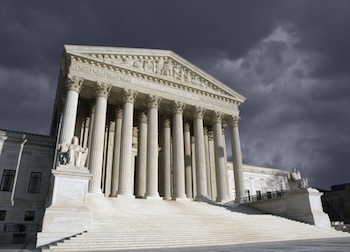 To the surprise and sorrow of some, but the relief of others, the Supreme Court earlier today denied certiorari in some key cases on patent eligibility law, putting any hope of further clarity in this realm squarely in the hands of Congress. Many see this as a dereliction of the Court’s duty, while others are just thankful the Court will not cause further harm than it already has.
To the surprise and sorrow of some, but the relief of others, the Supreme Court earlier today denied certiorari in some key cases on patent eligibility law, putting any hope of further clarity in this realm squarely in the hands of Congress. Many see this as a dereliction of the Court’s duty, while others are just thankful the Court will not cause further harm than it already has.
Commenting on the development, IPWatchdog CEO and Founder Gene Quinn tweeted out his view that this was a “bad day for patent eligibility” and that the denial of Athena ultimately “means medical diagnostics are NOT patentable in America.”

More from Gene tomorrow, but for now here are perspectives from some other IP authorities:
Todd Dickinson
Polsinelli
A great shame, especially Athena, doing harm to important technologies, and an opportunity missed.
Stephen Kunin
Maier & Maier
It appears that for the time being and considering the current composition of the Supreme Court, the Court seems to be satisfied with the Federal Circuit taking the lead in addressing the contours of patent subject matter eligibility. However, by not taking the Athena case the Supreme Court unfortunately has avoided providing needed clarity in the area of personalized medicine based on diagnostics when the Federal Circuit en banc seemed desirous of wanting more guidance. The real question is now where do we go from here? The USPTO tried to clarify section 101, but the Federal Circuit in Cleveland Clinic would not give the 2019 Patent Eligibility Guidance any deference. The Coons-Tillis Subcommittee has tried to craft a suitable bill to fix perceived problems with section 101, but those fine efforts appear to be stalled.
Paul Michel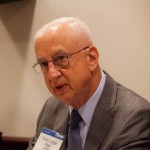
Retired Chief Judge, U.S. Court of Appeals for the Federal Circuit
The Supreme Court created the chaos on patent eligibility in 2010 with Bilski, worsened it in 2012 with Mayo, and still further [muddied it] in 2014 with Alice. Since then, it has declined every one of the dozens of petitions for review (now almost 50), despite desperate pleas from the patent community and, especially in Sequenom and Athena from the judges of the Federal Circuit itself. Today’s dismissal of three more [high-profile] petitions perpetuates the mess the Court imposed almost a decade ago and saps the incentives of most inventors to develop new cures and technology products, because this work requires large investments which are usually dependent on patent protection, now often unavailable here although it is widely available in China, Europe and other major countries. Although eligibility under these cases is not predictable and hence patents are unreliable, the effect on investment flows are entirely predictable: they will shift to countries offering wide and clear eligibility. Our global competitiveness and even national security suffer, for the very technologies most undermined by the Court’s cases are the ones of the immediate future, including Artificial Intelligence, Quantum Computing, 5G telecommunications, autonomous vehicles, genetic medicine, immune-therapy and many more. Only Congress can save the country from further harm.
Paul Morinville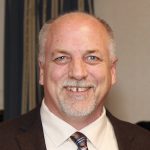
US Inventor, Inc
Big Tech swamped Congress with “patent troll” and “bad patent” lies and then greased those lies with Big Tech Big Bucks. Some in Congress see the lies and try to fix the 101 mess, but Big Tech Big Bucks are a powerful temptation for the weak. Thus, Congress is corrupted, frozen and won’t even stand up to defend the laws they themselves wrote.
The Federal Circuit, with the highest duty of anyone in government to stabilize patent law, has the highest duty to fix the 101 mess. But, instead, the Federal Circuit flagrantly and stubbornly refuses to define what is abstract and what is not. Instead, they conflate the statutory requirements of patentability into the definition of patentable subject matter, thus relegating once coherent jurisprudence to a pile of gibberish and dung. But more often, they just hide their damning illogic under Rule 36, thus normalizing the chaos that is killing our innovation engine. The Federal Circuit’s failure to perform their high duty of stabilizing patent laws exponentially magnifies the failed Alice-Mayo jurisprudence sending it into a new realm of illogic unintended by the very words of the Supreme Court decisions that created the mess. Trial courts are left confused and unsure, so, protected by Rule 36, judges find 68% of challenged patents invalid as abstract ideas.
USPTO Director Iancu issued well-reasoned 101 guidance in an attempt to thwart the worst of 101’s destruction. But the Federal Circuit, apparently thinking they are coequal with themselves alone, arrogantly informed the USPTO and all the rest of us that it just does not matter what the USPTO or anyone else thinks. They follow their own jurisprudence no matter how irrational and illogical it is and no matter how damaging it is to American innovation, economic growth and national security. They believe the Supreme Court will not correct them, and it now turns out they are right.
The Supreme Court opened this pandora’s box by rewriting the definition of the word “any” to no longer mean “any” under any known definition, yet even the self-proclaimed textualists sit on their hands and deny every 101 case. For very good reason and in the interest of the United States, the time has come to abolish the Federal Circuit so that patent law can once again be stabilized.
Adam Mossoff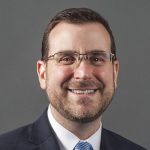
Antonin Scalia Law School, George Mason University
I am heartened that the U.S. Supreme Court did not grant cert today in the patent eligibility cases. It let stand the important decisions in Berkheimer and Vanda, in which the Federal Circuit has begun to exercise its appropriate discretion within the Alice-Mayo framework to set limits on the boundless and willy-nilly decision-making that has been destroying legitimate patented innovations. But I am also relieved it did not grant cert in Athena Diagnostics. The Supreme Court created this crisis with its four section 101 decisions—what I have called “the Four Horseman . . . [that] have cut through the innovation industries”—that culminated in the Alice-Mayo framework in 2014. Since then, the Court has now denied approximately 50 cert petitions that have asked it to reconsider its new patent eligibility inquiry in the Alice-Mayo framework. Seven of the nine Justices that unanimously decided Alice are still on the Court. They evidently think that nothing is wrong with either the Alice-Mayo framework or what it has done to the innovation industries—the legal uncertainty, the extensive invalidations of patents on legitimate innovations, and the loss of the U.S. comparative advantage in promoting innovation over China and Europe, as I and Kevin Madigan recently detailed here on IPWatchdog. Thus, the safe bet is that, if the Court grants cert in a section 101 case, even if it thought it was fixing the legal, policy, and economic problems, it would likely only make things worse. Thankfully, we don’t have to risk this bet with the denial of the cert petitions today.
Today’s denial of the cert petitions is a strong signal to both the Federal Circuit and to Congress to act. The Federal Circuit should exercise its legitimate discretion within the broadly framed Alice-Mayo inquiry and address the substantive and procedural failings in this key area of law, as it did in Berkheimer and Vanda. But Congress should also act. Congress should fix this problem once and for all by reforming section 101—abrogating the Alice-Mayo framework and reasserting the primacy of the statutory text that it enacted into law since 1790. Congress has acted before in abrogating key Court decisions in patent law negatively impacting the innovation industries, such as when it enacted Section 103 in 1952, and it should do it again. In fact, Congress should follow the example of Section 103 in both form and substance, as I recently detailed in a white paper released by the Heritage Foundation.
Irena Royzman
Kramer Levin
This is a case where a medical innovation was taken out of the realm of patent eligibility, although all the judges of the Federal Circuit agreed that medical diagnostics, such as those at issue in Athena, should be patent eligible under section 101.
Athena offered an opportunity to the Supreme Court to clarify what is patent eligible subject matter and to instruct courts to consider the invention as a whole rather than separating the discovery of a biological phenomenon from the steps that apply it to diagnose a disease, as courts do now. Without clarification in the law, medical diagnostics have no future and life-saving inventions will not be developed. This is bad for the health of Americans and bad for our economy.
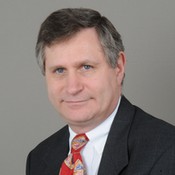 Manny Schecter
Manny Schecter
IBM
The Supreme Court has been consistent in refusing to hear additional cases relating to patent eligibility. As a result, the current state of patent eligibility will remain for the foreseeable future. The state of chaos, in which electric vehicle charging stations and garage door openers are somehow determined to be abstract and therefore patent ineligible, will continue to be a drag on innovation. That SCOTUS has denied cert in all of the patent eligibility cases means Congress must act now to reform patent eligibility.
Jonathan Stroud
Unified Patents Inc.
As a caveat, Unified takes no official position on 101. My personal opinion is that the amicus support, solicitor’s briefs in Berkheimer and Vanda, and the lobbying, Congressional, judicial, and administrative action surrounding 101 was at an apex such as we won’t see again for some time. It’s hard to imagine more pressure being applied to the High Court to take up 101. (Also, my prediction was wrong—mea culpa.) I think this categorical denial of all three reverts attention back to Congress and increases pressure on decision makers and policy heads to check their egos, roll up their sleeves, and learn to compromise if there is going to be a real chance of a legislative change to 101. My personal hope is that the denial here spurs supporters to be realistic about the level of compromise needed to enact any Congressional bill, and that renewed discussions after the Presidential election in 2021 present meaningful change that can maintain a broad base of support.
On the denial of cert in Regents of U. of Minnesota, it seems the sovereign immunity gambit championed by Shore Chan DePumpo, LLP in the St Regis case is now well and truly dead, both for tribal and state immunity. To paraphrase Chief Justice Roberts, it seems users of the patent system must take the bitter with the sweet.
This article was updated on January 13 at 6:40 PM EST to add Manny Schecter’s comment.

![[IPWatchdog Logo]](https://ipwatchdog.com/wp-content/themes/IPWatchdog%20-%202023/assets/images/temp/logo-small@2x.png)

![[[Advertisement]]](https://ipwatchdog.com/wp-content/uploads/2024/04/Patent-Litigation-2024-banner-938x313-1.jpeg)
![[Advertisement]](https://ipwatchdog.com/wp-content/uploads/2024/04/UnitedLex-May-2-2024-sidebar-700x500-1.jpg)
![[Advertisement]](https://ipwatchdog.com/wp-content/uploads/2024/04/Patent-Litigation-Masters-2024-sidebar-700x500-1.jpg)

![[Advertisement]](https://ipwatchdog.com/wp-content/uploads/2021/12/WEBINAR-336-x-280-px.png)
![[Advertisement]](https://ipwatchdog.com/wp-content/uploads/2021/12/2021-Patent-Practice-on-Demand-recorded-Feb-2021-336-x-280.jpg)
![[Advertisement]](https://ipwatchdog.com/wp-content/uploads/2021/12/Ad-4-The-Invent-Patent-System™.png)







Join the Discussion
41 comments so far.
Anon
January 29, 2020 10:49 amOn some unspecified date, in an unspecified thread…”
here and now – among many other examples.
Hint: look for where you attempt to dismiss things rather than dealing with them.
TFCFM
January 29, 2020 10:26 amAh. On some unspecified date, in an unspecified thread, you (supposedly) wrote some unspecified words that I’m supposed to not only remember (always a challenge with your word slaws), but recognize as relating to the issue I raised for the first time in this thread. Prepare to be shocked, but I lack the time to dredge through all the sludge you’ve written, trying to *somehow* match up some of your words with the ideas I express.
(Honest folks, BTW, don’t hesitate to repeat or clarify themselves when they’re not understood. Dishonest ones merely claim, “I already told you, and despite having the time to write this, I can’t possibly spare the time to repeat or explain myself.”)
Seeing how this article’s about to fall off the bottom of the ‘Federal Circuit Issues’ list on the right side of pages and I’m little inclined to seek the thread out merely to continue quibbling about your feckless “discussion” techniques, how about if we simply agree to discuss substance in future exchanges.
Should you fail to remember any of my words or to be able to relate them to yours, I will be very pleased to repeat or rephrase them. I hope that you will do likewise.
Anon
January 28, 2020 02:39 pmThat’s not a dodge. You ask a question already answered (even as YOU attempt to hand wave away that answer).
TFCFM
January 28, 2020 11:12 amAnon: “I DO discuss matters of substance.”
That’s odd, you appear to have merely dodged the most recent request to discuss substance in this thread:
TFCFM@#34: “If you believe that my understanding of this line of cases is deficient, it would be far more convincing to read reasoned statements of why you think so…“
Anon
January 27, 2020 12:48 pmExcept for the fact that I DO discuss matters of substance (that YOU attempt to hand wave away), your noticing of my diligence and persistence is appreciated.
TFCFM
January 27, 2020 10:39 amAnon: “You’ve tried that tactic before. It did not work then. It does not work now.”
I’ll grant you that: You’re as persistent as you are consistent in not-discussing-substance.
Anon
January 24, 2020 01:41 pmTFCFM,
More of the same false accusations from you.
You’ve tried that tactic before. It did not work then. It does not work now.
Your tactic of labeling anything you don’t like as “meaningless,” “hand waving,” and “spouting nonsense” does not fool anyone. That’s just like your pronouncements as to your willingness to engage on the merits (before you run away from those merits put to you).
And yes, I clearly know more about innovation and innovation protection laws and their history than you. There is no ‘imagining’ about that.
TFCFM
January 24, 2020 10:37 amAnon,
Your constant dodging of issues, statement of meaningless generalities, hand-waving, and attempted insult betray a profound lack of seriousness.
If I had so low a level of understanding as you reflexively assert (whenever you’re unable to reply substantively in any sensible manner), then one would think you’d make devastating arguments that lay bare my lack of understanding (rather than meaningless, hand-waving assertions unrelated to the topic at hand).
That you’re unable to refute the arguments (genuinely refute — not just “claim victory” after spouting nonsense) of one whose understanding you assert to be so low is an indictment of yourself (even ignoring the character traits such dishonest “discussion” tactics betray).
If you believe that my understanding of this line of cases is deficient, it would be far more convincing to read reasoned statements of why you think so, rather than mere assertions that I’m a doody-head and that you want to imagine that I’m less knowledgeable than you.
Anon
January 23, 2020 02:01 pmTFCFM,
Your understanding — and appreciation that the “score board is broken” are deficient — and are deficient for reasons already provided to you.
You may want to recall that your present attempts to parse claims and focus on some ‘element is abstract’ violates the necessity of both taking claims as a whole and as ordered combinations.
It is beyond evident that you engage in NO patent prosecution. You are — quite frankly — out of your element in these discussions.
TFCFM
January 23, 2020 10:57 amFrom #29
TFCFM: “Old, known structure + “any disclosed or non-disclosed improvement that works,” (for example) is hardly the sort of “structure” that the patent statutes were drawn to protect.”
Anon: “On your say-so….?”
This is a fair point that I didn’t clearly indicate.
I am, indeed, expressing my understanding of what one group of post-Alice (more accurately, post-Mayo) cases seem to be instructing: That claims directed to old, known “structure” (i.e., eligible subject matter) coupled with an abstractly-claimed “improvement” (i.e., any improvement that works, whether I have disclosed it or not) are being considered abstract and ineligible for that reason.
American Axle seems to me to be but the latest in this line of cases. It will be helpful to determining whether my characterization is accurate if we soon get a decision in a matter in which a patentee asserts BOTH:
– a claim directed to old, eligible subject matter, coupled with a specifically-claimed and clearly disclosed improvement and
– a claim broadly directed to the old, eligible subject matter, coupled with “any improvement that works” (or “that achieves the same results as my disclosed improvement”).
If my characterization is correct, a court will likely hold the former eligible and the latter ineligible.
TFCFM
January 22, 2020 10:39 amMJL@#26: “I stand by my statement that Chakrabarty was the most important 101 holding.”
You’re surely entitled to your opinion. I would appreciate an explanation of what you mean when you say that one Supreme Court decision is “most important.” Does it trump all the Supreme Court decisions that you don’t like so much? Also, are you the one who gets to designate which decisions are “most important,” or is there a Secret Super Supreme Court which does so (and, evidently, discloses its decisions to you alone)?
The Supreme Court neither re-wrote section 101 nor pretended that it re-wrote section 101 in the Chakrabarty decision. Instead, it decided the controversy before it (whether subject matter, otherwise eligible, was rendered ineligible because the subject matter encompassed a living organism).
You’re surely entitled to like that outcome. You’re entitled to opine (likely correctly) that the Chakrabarty decision had positive economic effects (by removing a faulty, non-statutory limit on eligibility). You’re entitled to want to see Congress re-write section 101 to substitute the dicta you quote from Chakrabarty in place of the current statute.
However, you lose credibility when you suggest that the Supreme Court, in Chakrabarty, nullified the current section 101 and substituted a brand new, crude, “anything-under-the-sun” eligibility test in its place.
Anon
January 22, 2020 10:31 amTFCFM, you presume that American Axle was properly decided.
You continue to miss the bigger picture here (while insisting on lecturing those that do grasp the bigger picture).
That’s not a ‘convincing’ position to stake out.
Anon
January 22, 2020 10:28 am“Old, known structure + “any disclosed or non-disclosed improvement that works,” (for example) is hardly the sort of “structure” that the patent statutes were drawn to protect.”
On your say-so….?
Maybe integrate into your view the words of Congress (in the Act of 1952) with 35 USC 100(b): “and includes a new use of a known process, machine, manufacture, composition of matter, or material.”
As you say: take care in your slant, as one providing a reply grounded in law will tend to show you as dishonest or incompetent.
Anon
January 22, 2020 10:23 amTFCFM,
I love how you accuse me of what you are doing in the assertion of my not replying to an issue. Let me remind you that it is YOU that have wondered off-point, and my post was a call for you to return to being on point.
You really are a ‘polite’ version of that venomous poster on that other blog (more polite, but no more compelling).
As to your advice of: “As I’ve advised rising associates over the decades: if you wish to be convincing in the field of patent law, you’d be well advised to avoid the temptation to ignore context and misread/misrepresent precedent. Even when you’re not doing so deliberately, a competent “other side” will point up the short-comings of your analysis and you will appear either dishonest or incompetent.”
While indeed this is sound advice, I suggest that you heed your own advice first.
TFCFM
January 21, 2020 10:23 amChecking for replies to #25, I just now realized that I failed to note that my ‘example’ in the final line was intended to parallel the American Axle case.
MJL
January 20, 2020 06:33 pm@TFCFM #22
You do not even know me but yet you insult me. TFCFM: you lack the standards of decorum and taste in your attacks on other contributors to this discussion.
I stand by my statement that Chakrabarty was the most important 101 holding.
Chakrabarty was inclusive, which is in contrast the the recent group of 101 holdings, which are restrictive.
The patentability of a genetically modified organism was a game changer. The Chakrabarty decision had a big impact on the biotech industry, which was in its infancy at the time. The ability to patent, for example, knockout mice, roundup ready plants, PCR, genetic therapies, medical diagnostics, and fermentation to create new drugs, brought large sums of investment money to San Diego, St Louis, Boston, and other biotech centers. This provided a ramp to rapid growth and innovation, the creation of successful companies, and allowed inventors/founders/investors to generate wealth from patented biotech achievements. I do not think another Supreme Court 101 holding has had as great of a positive impact on the nation’s economy, as compared to Chakrabarty.
I could go through a discussion of 101 decisions starting from JEM v. Pioneer or how the Breyer’s dissent in the dismissed LabCorp v Metabolite was the window to our present situation.
However, I will not waste my time giving you an education.
TFCFM
January 20, 2020 10:20 amCurious@#24: “The vast, vast majority of what is being invalidated today under 35 USC 101 can hardly be cared “pure mental” processes or functionally-defined improvements lacking any structure.”
The eye of the beholder, evidently, counts for much in this regard.
Old, known structure + “any disclosed or non-disclosed improvement that works,” (for example) is hardly the sort of “structure” that the patent statutes were drawn to protect.
Curious
January 17, 2020 11:22 am– The Telegraph Case (O’Reilly v. Morse, 185?)
I suggest you read it first. I did recently. You can find it here: https://supreme.justia.com/cases/federal/us/56/62/
Aside from hardly being a paragon of clear judicial writing, what was being claimed (i.e., the eighth claim) is NOTHING like what is currently being rejected/invalidated under 35 USC 101. Moreover, the reason why it was rejected was more about enablement than anything.
– Funk Brothers Seed Co. (1948)
Similar to Morse in that the breadth of the claims unreasonably exceeded the breadth of the disclosure.
Alternatively, provide substantive evidence that Congress (whether in the 1952 statute or elsewhere) included purely abstract subject matter (e.g., a purely mental “process” or an-only-functionally-defined “improvement” lacking any structure) among the subject matter eligible for patenting.
What a lovely straw man you have created. The vast, vast majority of what is being invalidated today under 35 USC 101 can hardly be cared “pure mental” processes or functionally-defined improvements lacking any structure.
You won’t, of course, because you can’t.
Creating straw mans but not supporting your own assertions. That is the best you can do?
TFCFM
January 17, 2020 10:11 am@Anon #21
Congratulations on, once again, declining to reply to an issue and instead waving your hands around an entirely different question. I *do* wonder why you bother “replying” merely to do so.
(BTW, there is nothing that section 101 “must” or must not say or include. Patent law is entirely legislatively-made. Congress could limit patent eligibility to inventions made every other Thursday afternoon to left-handed women whose middle names beqin with the letter “D,” if they so chose. (The rationale for such a choice would surely be interesting.)
TFCFM
January 17, 2020 10:07 amMJL@#20: The most important 101 holding is Diamond v Chakrabarty 1980, which held Congress intended statutory subject matter to “include anything under the sun that is made by man.”
I think you misunderstand U.S. law. One Supreme Court holding doesn’t become “the most important” one because you like how dicta therein can be misread.
The Supreme Court is not a legislature — it is a court which, as our Constitution requires, decides controversies that are before it. Thus, the issue in Chakrabarty was not “Oh, Supreme Court, would you please re-write section 101 to make it say something nice.” Instead, the question the Court faced was whether subject matter, otherwise eligible, was rendered ineligible because the subject matter encompassed a living organism. The answer (and all the case stands for in the eligibility sense) was “no, the subject matter remains eligible even if it encompasses a living thing.” The statutory categories set forth in 101, for example, were not abolished and replaced with “anything under the sun that is made by man,” nor were all prior cases holding certain classes of subject matter ineligible overturned.
As I’ve advised rising associates over the decades: if you wish to be convincing in the field of patent law, you’d be well advised to avoid the temptation to ignore context and misread/misrepresent precedent. Even when you’re not doing so deliberately, a competent “other side” will point up the short-comings of your analysis and you will appear either dishonest or incompetent.
Anon
January 16, 2020 06:38 pmNice obfuscation, TFCFM.
How about instead of having others proving negatives or chasing your strawmen, you actually show some cogent substantiation of your assertion that 35 USC 101 as written is “poorly- and vaguely-written”
Remember to keep in mind the counterpoints already put to you (you know, about the very nature of innovation and why 101 must be open ended).
Michael J. Lang
January 16, 2020 11:55 amThe most important 101 holding is Diamond v Chakrabarty 1980, which held Congress intended statutory subject matter to “include anything under the sun that is made by man.”
Standard interpretation of “anything under the sun made by man” would include medical diagnostic inventions.
In addition, Justice Burger, who wrote the opinion, stated: We have cautioned that courts “should not read into the patent laws limitations and conditions which the legislature has not expressed.”
Apparently, the courts did not get this memo and have ruled inconsistently, which has changed Congress’s intent of 101.
Now, we no longer have the rule of law for patents. The judicial doctrine created for 101 (and the USPTO documentation thereof) has made impossible to get a patent for many inventions and easy to invalid excellent issued patents. This was not the intent of Congress when 101 was drafted in 1952.
Kudos to Curious who hit the nail on the head. 101 was never intended to be used for invalidity, as codified in 35 USC 282.
TFCFM
January 16, 2020 11:44 amA few folks have taken issue with my statement:
TFCFM@#9: “The courts have, in my opinion, done the best they could with a poorly- and vaguely-written statutory provision…”
From those folks, I would appreciate an explanation of how it is that the 1952 promulgation of section 101 did not overturn, for example:
– Funk Brothers Seed Co. (1948)
– The Telegraph Case (O’Reilly v. Morse, 185?)
That less-than-everything is patentable is both inherent in the 1952 statute (categories without boundaries are not categories) and long-standing law, both before and after the 1952 version of the statute.
Alternatively, provide substantive evidence that Congress (whether in the 1952 statute or elsewhere) included purely abstract subject matter (e.g., a purely mental “process” or an-only-functionally-defined “improvement” lacking any structure) among the subject matter eligible for patenting.
You won’t, of course, because you can’t.
ghostndragon
January 14, 2020 02:11 pmLol! I agree, but it’s sure hard to blame the “Obama court” now, eh Mr. Quinn?
Anon
January 14, 2020 02:07 pmJam,
“ However, separation of powers also means that the executive doesn’t have to give in to the whims of the judiciary.”
Not quite. For any law as written by Congress and properly interpreted through the likes of Common Law, the duty of the Executive Branch is to execute (enforce) the law.
The problem here of course (and it is one massive elephant) is that the Supreme Court is not so much interpreting anything, and instead has overreached its authority and scrivining its own version of the law. The ‘more tactful’ advice that you provide for Iancu is spot on to my “I have a dream” post of just about a year ago in view of what I had wanted Iancu to do with the then imminent release of a new eligibility protocol.
Curious,
Bravo. Extremely well said.
Curious
January 14, 2020 01:27 pmThe courts have, in my opinion, done the best they could with a poorly- and vaguely-written statutory provision
The apologist for the patent infringers is back — this time with another doozy.
The text of 35 USC 101 reads:
“Whoever invents or discovers any new and useful process, machine, manufacture, or composition of matter, or any new and useful improvement thereof, may obtain a patent therefor, subject to the conditions and requirements of this title.”
What about this is vaguely-written? It was intentionally written to be expansive in scope. Absent from this text is any mention of the judicial exceptions to statutory subject matter (i.e., what we all agree is vaguely applied) — unsurprising, since they were judicially created, not the creation of statute. Congress didn’t create the mess, it was the judiciary that created the mess — the same judiciary have now declined to clean it up.
Furthermore, anybody notice the absence from 35 USC 101 of it being a “condition for patentability”? This is found in 35 USC 102, 103 but not in 101. This is not an oversight of the drafters of this language. Under 35 USC 282(b)(2)-(3), invalidity of a patent is a defense for “a condition of patentability” or “any requirement of section 112, except for [best mode].” See anything in there about subject matter eligibility? No, subject matter eligibility being a mechanism to invalidate a patent is another judicial creation untethered from the statute. Subject matter under 35 USC 101 was never intended to be a condition of patentability.
Benson v. Gottschalk created this mess and was based upon both a mis-characterization of the holding of Morse, and a mis-application of that holding. The holding of Morse addressed a claim whose breadth unreasonably covered more than what was disclosed, which goes back to the fundamental bargain described in the US Constitution (i.e., disclosure by the inventor for limited exclusive rights). Morse essentially addressed an enablement issue (i.e., 112, 1st paragraph) — not a subject matter eligibility issue.
Additionally, the holding of Morse isn’t as draconian as it may appear to be, as all claims cover uses beyond that what is disclosed. Morse’s eighth claim is the following:
“I do not propose to limit myself to the specific machinery or parts of machinery described in the foregoing specification and claims; the essence of my invention being the use of the motive power of the electric or galvanic current, which I call electromagnetism, however developed, for making or printing intelligible characters, signs or letters at any distances, being a new application of that power, of which I claim to be the first inventor or discoverer.”
Rewritten into language of today: “using electromagnetism to make or print intelligible characters, signs or letters at any distances.” Clearly, the full scope of that claim is not reasonably enabled. However, the claims being invalidated today (based upon case law whose direct lineage points to Morse) aren’t even remotely as broad as that language.
The issue, as characterized in Benson, was that “the ‘process’ claim is so abstract and sweeping as to cover both known and unknown uses of the BCD to pure binary conversion.” While at first blush, it may seem like this is the same issue as Morse, but it isn’t. An invention having multiple (and unknown) uses is not the same as claiming an invention so broadly as it covers multiple (and unknown) implementations. A disclosed implementation with multiple (unknown) uses should be acceptable because the disclosed implementation is what is being patented. Consider a claim directed to a “wheel” where wheels have never been invented before. A wheel has multiple other uses besides used as part of a vehicle. However, that does not make a claim to a “wheel” unpatentable.
In short, the observation that the “[t]he courts have … done the best they could with a poorly- and vaguely-written statutory provision” is 180 degrees from the truth. On the contrary, the courts have done their worse in misrepresenting intentionally broad language never intended to be used to invalidate a patent.
Paul Cole
January 14, 2020 12:44 pm@ Anon 12
I have doubts whether the CAFC judges or the Justices gave the slightest attention to statutory construction. That is because they have all forgotten what they were taught at law school. And the fact that the Justices in some cases have gone straight to the judicial exceptions does not establish a rule of law that the Federal Circuit can and should routinely do likewise.
Paul Morinville
January 14, 2020 12:36 pmTFCFM “The courts have, in my opinion, done the best they could with a poorly- and vaguely-written statutory provision”
What part of “any” do you not understand?
Anon
January 14, 2020 12:24 pmTFCFM,
More dishonesty from you.
“done the best they could with a poorly- and vaguely-written statutory provision”
There is nothing poorly- or vaguely-written about 35 USC 101.
Maybe instead of taking the positions that you do, try brushing up on the history of the Act of 1952 and the nature of innovation to understand the simplicity and directness of 35 USC 101 (and WHY eligibility is necessarily a wide-open gate). Innovation is de facto ‘unknowable’ and that first gate need be open ended. Legislating specific items to be patent eligible would be a never-ending read-guard action, and the state of ANY law so written would always be stifling the cutting edge of innovation.
You continue to show that you do not grasp patent law and that you do not grasp the nature of innovation to which patent law is intended to promote.
The problem here is simply NOT with the statutory law. The problem here is DIRECTLY with the Supreme Court wanting their version of that statutory law.
Anon
January 14, 2020 12:18 pm“What justification there is for solely considering judicial exceptions as opposed to the positive eligibility provided by Congress and the existing jurisprudence relating to those positive provisions”
Mr. Cole, shall I go looking for that thread over at Patent Docs that (I thought) would put an end to your ignoring of what the Supreme Court did (and the meaning of ‘exception. pertaining to items that otherwise DO fall into the statutory categories (that is, positive provisions)….?
Anon
January 14, 2020 12:15 pm“and by stretch of rules allegedly derived from the SCOTUS jurisprudence to an extent almost certainly unintended by SCOTUS itself”
No. Sorry Mr. Cole, but this attribution of non-intention just does not fly.
That’s rather the point here (and in fifty plus other non-engaged cert petitions). IF this really was unintended by SCOTUS, SCOTUS needs to grant cert and correct the waywardness.
They do not and they are not.
Why do you insist on being a Supreme Court apologist?
Jam
January 14, 2020 12:11 pmThe courts should be ridiculed, vilified, and disparaged for their opinions that violate first principles, lack moral authority, and are logically unsound.
That the Federal Circuit did not adopt the USPTO guidelines is not really a big deal. Separation of powers means that the judiciary doesn’t have to give in to the whims of the executive. However, separation of powers also means that the executive doesn’t have to give in to the whims of the judiciary.
In particular, Iancu should instruct the PTAB and examiners to limit the scope of abstract ideas and natural laws exclusively to the specific claims from actual court rulings. I.e., so long as an applicant’s or patentee’s claims are patentably distinct from the claims found expressly by the courts to contain abstract ideas, then the applicant’s or patentee’s claims should be allowed, even if the application landed in the 3600 art unit (business methods).
TLDR: if my claims pass statutory 101 and are patentably distinct from the claims of Alice, Mayo, Electric Power, or any other case in the body of abstract idea/natural law case law, then my claims should be patent eligible.
TFCFM
January 14, 2020 10:52 amGiven the lack of satisfaction with the Supreme Court’s prior eligibility-related decisions and legislatures’ common practice of “allowing time to pass to tell if a judicial fix is effective,” I think it’s for the best that the Supremes didn’t grant cert here.
The courts have, in my opinion, done the best they could with a poorly- and vaguely-written statutory provision, and declining to “take another swing” at so-poorly-defined a target should rightly return everyone’s focus to the legislature to consider, debate, and carefully demarcate what should — and what should not — be eligible for patenting.
It’s time to step up to the plate, Congress!
Charles E. Miller, Association of Amicus Counsel
January 14, 2020 10:45 amI note the last sentence of Paul Morinville’s comment in which he urges the abolition of the Federal Circuit. By that I think he meant at least the court’s jurisdiction of patent cases under 28 USC 1295. When the Federal Circuit was created in1982, many thought it might be a good thing. However, I recall the comments made back then by what was perhaps a learned minority of the patent bar that transferring patent appellate jurisdiction of the regional circuits and the Court of Customs and Patent Appeals to a single circuit of the court of appeals might turn out to be a mixed blessing. In retrospect it seems that, to some extent at least, it turned out to be a black swan.
anonymous
January 14, 2020 10:18 amProfessor Mossoff’s white paper is spot on. Congress needs to amend 101 to abrogate Alice the same way 103 was amended to abrogate the “flash of creative genius” test from Cuno.
Congress, please amend 101 quickly. There is no more time to wait, and it is now clear that SCOTUS has no intent to help the innovation economy.
Paul Cole
January 14, 2020 09:48 amI agree with Paul Morinville that the Federal Circuit is the principal bad-actor here by interpretation of the words “directed to” as a pretext for avoiding proper claim construction even on the plain wording of the claims as written and proper respect for the all elements rule and by stretch of rules allegedly derived from the SCOTUS jurisprudence to an extent almost certainly unintended by SCOTUS itself whose decisions if closely read are extremely cautious and not intended to have given rise to major change. For example, it is implausible that SCOTUS intended to create a categorical exclusion for diagnostic methods as the Federal Circuit now appears to believe is the case, and that is not a reasonable interpretation of Mayo itself.
One of the other ways in which the Federal Circuit is a bad actor is in its limited comprehension of the scientific facts underlying many of its decisions, so that its reasoning is founded in scientific error as exemplified both in the Sequenom and in the Athena decisions, including the en banc reconsideration.
Given that Congress is not going to act positively any day soon and the SCOTUS door has remained shut, what should we do? Sitting on our hands and weeping is not the best option. The Invictus poem concludes: “I am the master of my fate and the captain of my soul.” There are undoubtedly ways in which we as a profession can move forward from the situation in which we find ourselves, and the task is to identify those ways and act on them.
Notwithstanding the level of legal writing on Section 101 there is room for extensive constructive study:
(i) What were the material facts in Mayo and the following SCOTUS opinions, and what rules of law are truly derived from them? It is possible that if the relevant rules of law and their true intended scope are understood, then Mayo may not be binding to the extent that the Federal Circuit now believes.
(ii) Whether successive Federal Circuit decisions are truly based on underlying scientific fact. If it turns out that they are rooted in falsehood (as I believe is the case in many instances) then the allegedly precedential decisions will lose all binding power in relation to subsequent cases where the true facts are known.
(iii) Whether the Federal Circuit is truly applying the legal rules of law derived from the SCOTUS opinions when each of them is considered as a balanced whole or, as I suspect, has significantly deviated.
(iv) Analysis of SCOTUS and Federal Circuit opinions to identify material rules of law which are binding and material findings of fact which are not. Is the identification of paternal DNA in maternal blood truly a finding of law, or is it a finding of fact that might be more freely questioned and distinguished?
(v) What justification there is for solely considering judicial exceptions as opposed to the positive eligibility provided by Congress and the existing jurisprudence relating to those positive provisions. Indeed, it could be argued that failure to consider both positive eligibility and judicial exception and to properly balance the two is a cardinal error, the second stage of the Mayo analysis not providing the necessary balance because it starts from a presumption of exclusion.
There is also room for positive improvement in specification drafting to make the underlying scientific facts more comprehensible to judges who lack scientific training and to avoid woolly over-generalised claims that provide scope for the judicial misinterpretation referred to above.
As they say, when the going gets tough the tough get going. That is what we all must do.
Anon
January 14, 2020 08:34 amangry dude @ 2,
That’s not laughter but scorn at you for being such a mouthpiece of the Efficient Infringer.
Anon
January 14, 2020 06:14 amZoobab,
With the notion of innovation begets innovation in mind, what is it that you feel is this thing called patent inflation, and how is that thing tied to the judicially created mess of patent eligibility?
zoobab
January 14, 2020 05:56 amYou invited all the patent industry here, who is profiting from patent inflation.
angry dude
January 13, 2020 11:45 pm“…the denial of Athena ultimately means medical diagnostics are NOT patentable in America”
The doc said “to the morgue” – to the morgue it is!
Why people were laughing at the phrase ?
Sounds very appropriate under the circumstances 🙂
Anon
January 13, 2020 11:04 pmMr. Kunin,
“ USPTO tried to clarify section 101, but the Federal Circuit in Cleveland Clinic would not give the 2019 Patent Eligibility Guidance any deference”
Excuse the perhaps minor nit, but Cleveland Clinic lost out on PRE-2019 guidance.